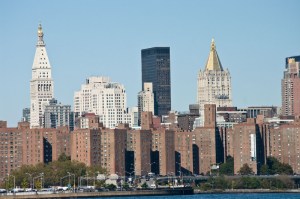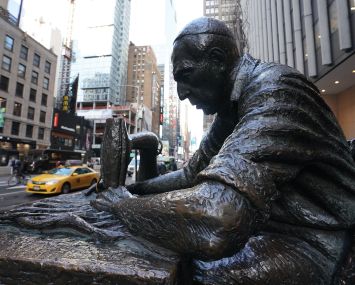 In the heat of the bidding for Stuyvesant Town in 2006, a sale that gripped the real estate world, Mayor Bloomberg and his administration were begged by housing advocates to intervene to help preserve the 11,200-unit complex as middle-class housing. The existing tenants, Senator Chuck Schumer and Council Speaker Christine Quinn joined in the chorus, urging action from the mayor.
In the heat of the bidding for Stuyvesant Town in 2006, a sale that gripped the real estate world, Mayor Bloomberg and his administration were begged by housing advocates to intervene to help preserve the 11,200-unit complex as middle-class housing. The existing tenants, Senator Chuck Schumer and Council Speaker Christine Quinn joined in the chorus, urging action from the mayor.
The administration’s response: let the private market be.
The high-priced property sale and conversions of rent-regulated units to luxury rentals would bring a flood of tax revenues, and that money could be used more efficiently subsidizing new middle-class housing in Queens and elsewhere outside of Manhattan, the administration’s logic went.
The mayor’s changed his tune.
In a statement sent out this afternoon, the city’s housing commissioner, Rafael Cestero, enumerated a strong stance in favor of keeping the small city of a complex as affordable to the middle class, calling it the city’s “overriding concern” that it remains affordable for “generations to come”:
“Creating and preserving affordable housing in a city with a growing population is paramount to ensuring the stability and diversity of our city. Since the 1940s Stuyvesant Town and Peter Cooper Village have served the housing needs of the hardworking middle-class families of New York, and it is our overriding concern that they remain a key component of the city’s affordable housing stock for generations to come.”
Andrew Brent, a spokesman for Mayor Bloomberg, denied the move was a flip, saying the administration’s philosophy has been consistent.
“That we’re concerned about the tenant protections and level of affordability at Stuyvesant Town and Peter Cooper Village is not new,” he said in a statement. “Still, it remains a private transaction”
Deputy Mayor Dan Doctoroff said at the time of the Stuyvesant Town sale that the price per unit of preservation, after the administration looked at it, was substantially more than it cost to build in the outer boroughs. In a Times article on the planned housing for Hunter’s Point South in Queens, Mr. Doctoroff was attributed as saying the preservation at Stuyvesant Town would have cost $107,000 per unit, compared with $54,000 in city money for the Queens housing.
”So we can get two units here for every one there,” he told The Times, ”plus we get a major increase in the housing stock.”
What, exactly, is behind the Bloomberg administration’s shift is unclear. Mr. Doctoroff, the strong-opinioned administrator who erred toward the laissez faire school on real estate issues, is gone. So, too, is the city’s housing commissioner at the time, Shaun Donovan, now the federal HUD secretary. Also gone is the roaring real estate market, and, with it, the promise of tremendous gain from property tax revenues one could expect from market-rate apartments. A court decision requiring rent stabilization throughout the complex will further depress the expected taxes to come from the project. Thus, the cost of preservation has presumably fallen (the value of the complex is now estimated at $1.9 billion or so, down from $5.4 billion), as has the revenue.
So the economics have changed, clearly. But so has the political character of the city–it’s tilted leftward–and the affordable housing plan that the Bloomberg administration is pursuing. That plan, yet to be officially announced but outlined in the mayoral campaign, calls for a shift toward more preservation. Originally, the mayor promised 92,000 new units and 73,000 apartments preserved as below-market rate by 2013. Now, those numbers are expected to flip, as new housing is both more expensive and harder to come by in today’s tight lending market.
ebrown@observer.com


